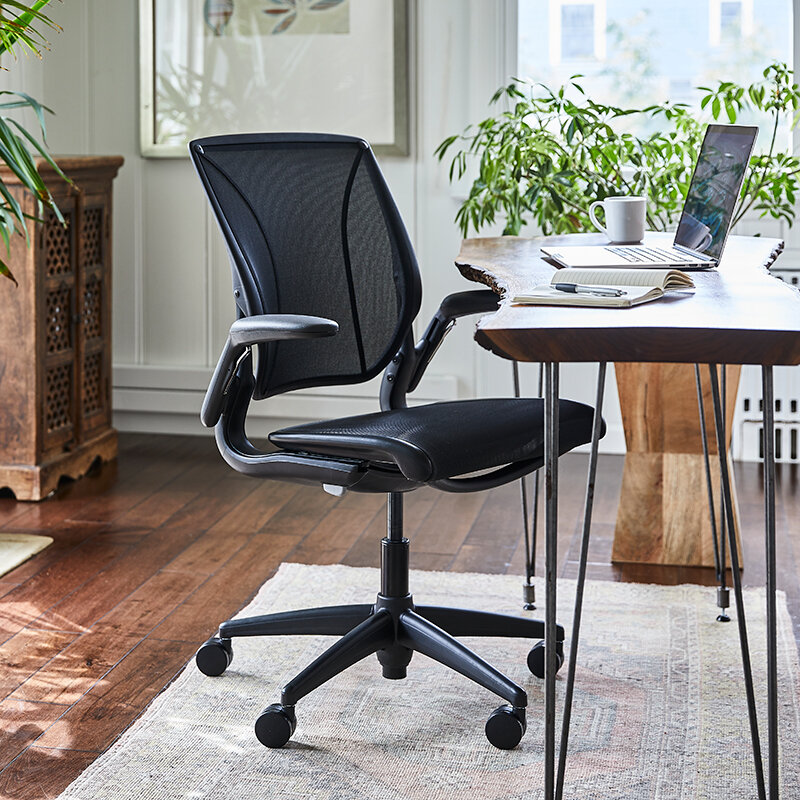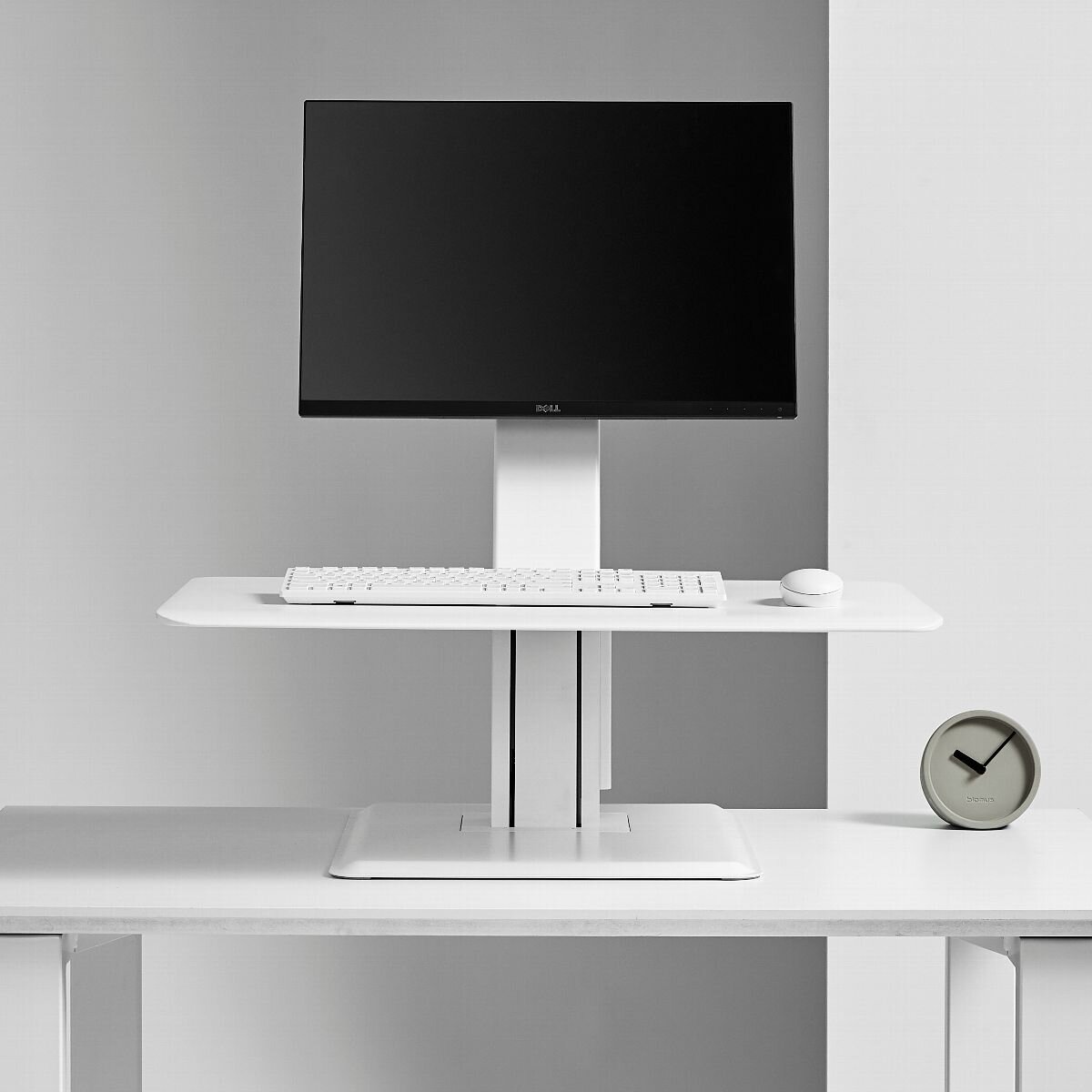Many of us have been working from home due to the COVID-19 pandemic.
Some of us are new to working from home and not fully prepared to have a home office workspace setup. Sometimes space within the home is limited (especially living in NYC) and office space may double as a dining space, kitchen counter, living room, or general use area.
As we enter the sixth month of working remotely, many of us are feeling the effects of working in a temporary office setup and have developed back pain, neck pain, shoulder pain and carpal tunnel syndrome.
We asked some of our architects and designers what are the common issues they are facing and what they’ve done to create a more ergonomic and comfortable workspace.
- One aspect of working from home for Tyler, our staff architect, is to be able to change his arrangement throughout the day. He will often move from sitting at the dining table to his standing desk that he created on top of his dresser using coffee table books, or a pop-up tray table from IKEA.
- Ysabelle, our junior designer, has noticed her chair has been causing her some back pain since the beginning of the pandemic. She bought a new office chair with a proper arm rest to help with her daily seating posture. She also added a few stacked books to create a standing desk.
- One of the biggest issues for Anthony, our senior project manager, is the leg and back pain that he developed over recent months since he uses a vintage desk chair that does not have the same ergonomic design as his office seating. To improve the efficiency of his (WFH) work-from-home environment, Anthony bought a second, larger monitor and a wireless keyboard for his laptop.
When considering proper ergonomics, the first item to assess is the chair. The chair should be set up to maintain a neutral posture, the rest of your workstation needs to be assessed to maintain that posture.
Here is a minimal yet fully-functional task chair by humanscale that offers ergonomic support and is cost effective. It provides lumbar support, adjustable height positions, and a curved seat-edge to ease any pressure on the back of the legs.
World One Task Chair by Humanscale
If you frequently use a keyboard and mouse, it should be positioned at the edge of your desk and have a palm rest to support your wrists. A well-designed keyboard tray, such as this one from Humanscale, offers protection from carpal tunnel syndrome. When your hands are properly positioned, it affects your overall posture and removes the possibility of also developing neck and back pain.
Image Source: Humanscale
Another essential item for an ergonomic workstation is the desk.
A height adjustable standing desk helps you cycle between siting and standing throughout your workday; this is essential for both your comfort and your health.
I recently purchased this standing desk from Uplift Desk and was surprised how easy it was to install. The “V2” and “V2 Commercial” standing desks were selected by The New York Times’ Wirecutter as the #1 best standing desk the past 2 years.
Image Source: Uplift Desk
If you need to work with an existing, fixed-height desk, there are several products that can be placed on top of the worksurface to create a more ergonomic setup; this can transform an ordinary desktop into healthy, active workspace.
Image Source: Humanscale
I also personally like to use an aroma diffuser to help release stress. A diffuser from MUJI has two, adjustable LED lights and four different timer settings!
We’ve learned over the past few months just how important it is to make sure we have a healthy work environment. Everything that we use, actively or passively, works together to make us productive in our workspace. Task chairs, sit-stand desks, and keyboard trays are just a few of the things we need to consider when putting together a home office. Checklists such as the one found on the CDC’s website are a great way to make sure you are aware of what may play a role in how efficiently you work. Whether you’re working remotely a few days a week or full-time, it’s important to make sure you maintain a healthy approach to your work environment.
Article written by Joan Tsen, Senior Interior Designer



